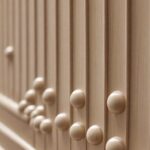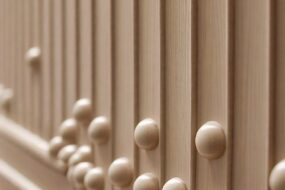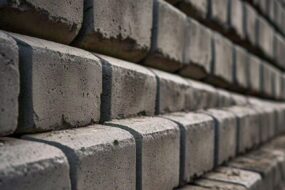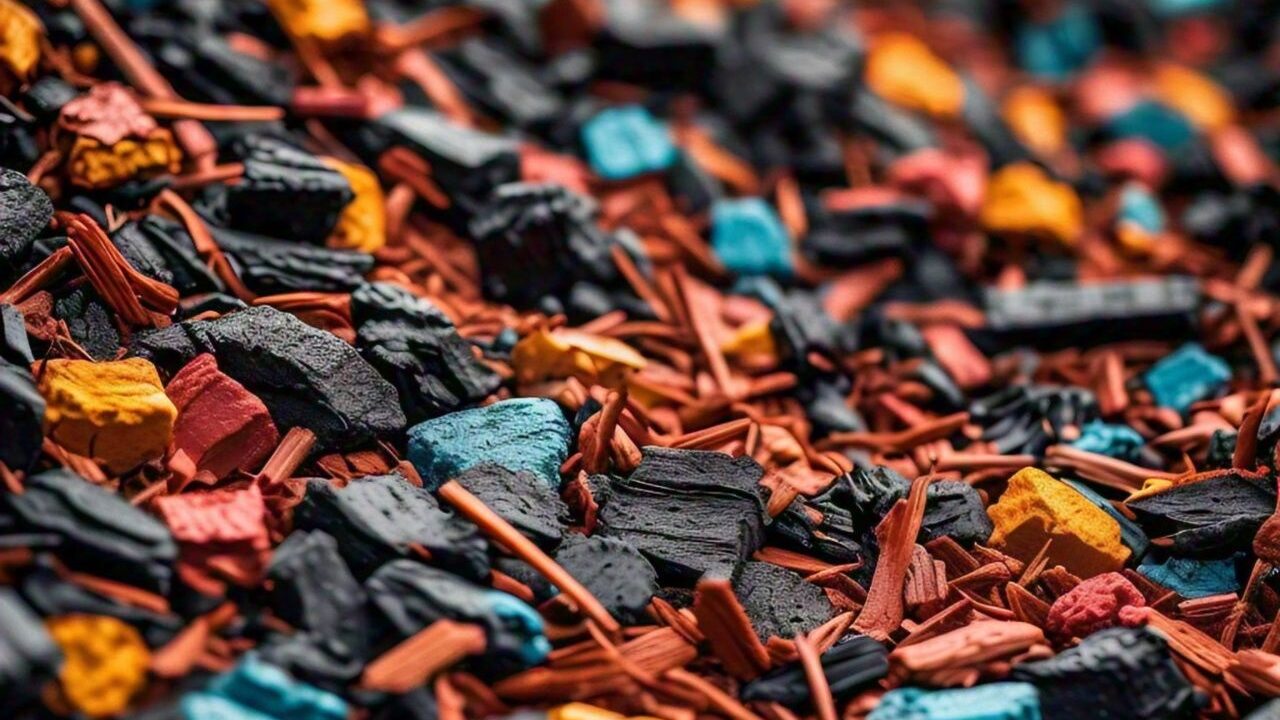
Rubber mulch is gaining thanks in landscaping, gardening, and especially as the surface material of playgrounds. While this has some of the downfall of regular wood mulch and also solve some of the natural issues related with most of the mulching materials. In and out of this article, we’ll be looking at rubber mulch in a more detailed way, from its return and uses, process of installation, maintenance tips, and possible disadvantage/glitches.
What is Rubber Mulch?
Rubber mulch is a look of rubber in small chips which is derived from recycles rubber used in used tires. It entails cutting the rubber in pieces which are like small logs of wood. In addition, rubber mulchs made from recycled tires does not add up to the detrimental impact of wastes in landfills other making landscaping environmentally friendly.
Benefits of Rubber Mulch
1. Durability
Rubber mulch, however, is much more hard wearing. The other popular type is rubber mulchs and it does not have the same life as wood mulchs where it tends to disintegrate after sometime and lose its shape and functionality. In simple terms, it means that they will require replacement after a longer period and they drink less money on maintenance.
2. Effective Weed Control
Some of the main functions of mulch include stopping weed growth. This is done effectively by rubber mulch forming a layer in which light cannot penetrate to help the weeds with their germination. This leads to a neat garden or a landscape region as seen in the figure below.
3. Further Improvement of Safety for Playgrounds
Hardwood rubber mulch is safer to be used in playground area than the wood mulchs because it will prevent injury once a child falls on it. It’s also soft and cushion like, so when people or children fall it will minimize the level of injuries. It is also not tonguing and therefore would create a good environment and place for children to play in.
4. Superior Moisture Retention
It is less likely to get swollen when in contact with water the way organic mulches will when exposed to water. This property facilitates water penetration to the soil and thus favors plant water uptake more than. It also minimizes evaporation, which is advantageous in matters to do with soil wetting and management.
5. Pest Resistance
The commonly used organic mooching materials may consist of pests such as termites, ants or rodents who may in turn cause damage to the plants or structures. Unlike many natural products used as garden mulch, rubber mulchs is not a favorite among these pests, making your garden safer for the plants.
6. Color Longevity
Rubber mulch lasts long before it achieves that wood like look or before it changes color. Traditional wood mulchs tends to change its color after being subjected to sunlight and rain for some time while rubber mulchs will keep this bright color for several years.
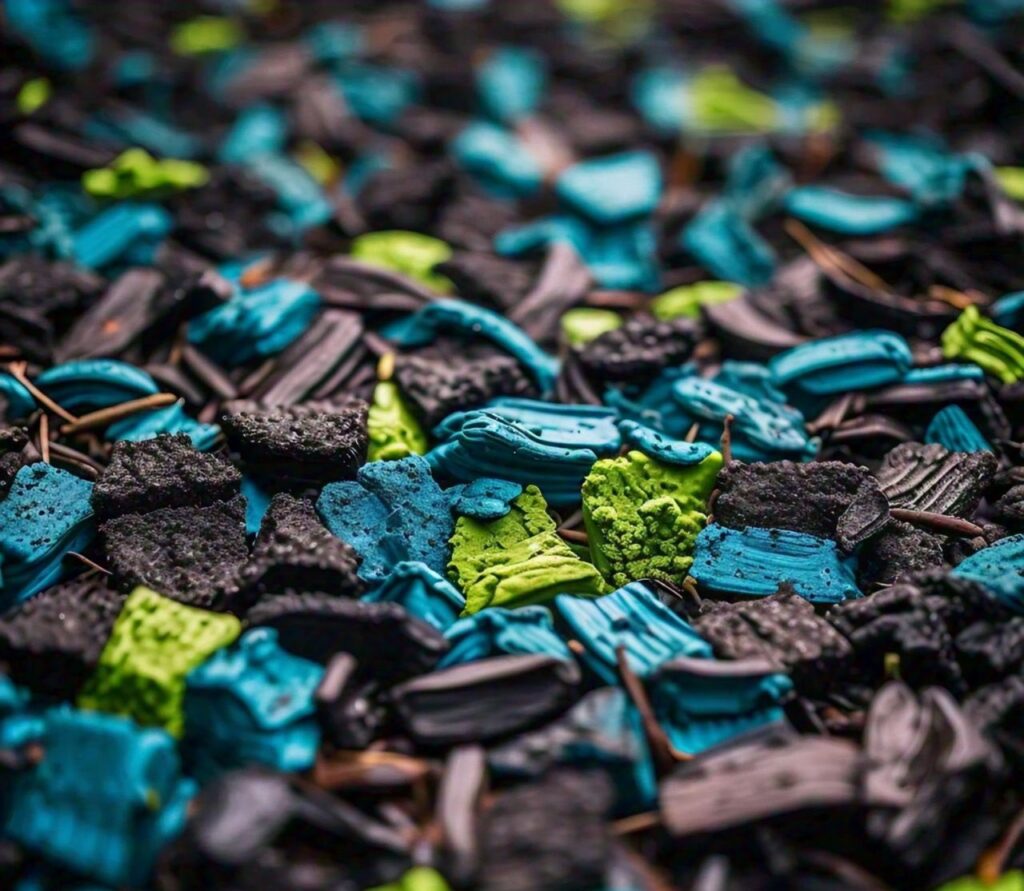
Common Uses of Rubber Mulch
1. Landscaping
Landscapers commonly use rubber mulch as an attractive feature with functional benefits. They apply it near flower beds, trees, and shrubs to create an organized finish, suppress weeds, and help regulate moisture in the soil.
2. Playground Surfacing Rubber Mulch
In their paper, Barns and Nasal highlight that safety is always a concern in play areas and that they address this issue with rubber mulches as a playground surface. They also emphasize the product’s softness, making it suitable for use in spaces like playrooms where children play.
3. Equestrian Arenas Rubber Mulch
Originally, rubber mulches in equestrian facilities helps in enhancing the surface that horses make contact with. Safety of horse base is better than sand or wooden shaving and gives good grip so it is suitable for horse arenas.
4. Athletic Fields Rubber Mulch
Using rubber mulches in athletic field can help to achieve important goals of improving performance and safety. To create a tougher surface, this will help minimize stress on the bones of athletes during activities like running or jumping.
5. Trails and Pathways Rubber Mulch
It is also used widely in the garden path or trail, hiking trails, and jogging tracks. The strength saves it from wearing out easily when subjected to heavy traffic which makes it suitable for outdoors.
How to Install Rubber Mulch

1. Preparing the Area
Before you put down the rubber mulch, clean the area of rocks, leaves, weed stems, and any debris. Remove any dead mulch as well. You can also lay a weed barrier fabric above the soil to combat the weeds.
2. Applying the Mulch
Immediately, extend the rubber mulch starting from one edge of the area to the other uniformly. For landscaping for example, 2- 3 inch depth is adequate. For purposes of playgrounds, one may be required to add a 4-6 inch to meet the recommended safety standard.
3. Leveling the Surface
After applying the mulch, there is need to level the surface in order to give the plants the best environment. This makes the concrete surface even as this is essential in playgrounds as the result of leveling will create an even cushioning on the surface.
Maintenance Tips for Rubber Mulch
1. Regular Raking
Rubber mulch is very low maintenance. If not, raking it from time to time will do a lot of good since this will just level up the area and reposition the mulch on spots that get much attention.
2. Inspect for Contaminants
Because rubber mulches is made from rubber, debris such as leaves or litter may occasionally accumulate on the surface. Staff clean these areas and remove various contaminants either daily or at least once a week to keep the area looking clean.
3. Refreshing the Color
Wood mulches, in contrast to rubber mulches, loses color relatively quickly; however, the surface of it may look slightly different. One may hire a contractor to apply a rubber mulchs color refresher and give it a nice bright look once more.
Drawbacks of Rubber Mulch
1. Initial Cost
Rubber mulches somehow are more costly than the square wood mulches. But since it is a durable material, and requires minimal maintenance, the added cost is recovered in the long run.
2. Limited Organic Benefits
However, rubber mulch itself does not break down and improve the soil quality as we see with the wooden mulches. Hence, it does not introduce any nutrient into the soil which might be a plus for some gardeners.
3. Potential for Overheating
Because it has heat absorbing qualities rubber mulch can heat the soil below it after getting heat from the sun. This can be harmful in regions with high temperatures or plant species that grow best in cool temperatures is concerned.
Environmental Impact
In so far as the environmental concerns are concerned, rubber mulchs has a twofold function here. On one hand, it minimizes the produce benzene and other pollution emissions while on the other hand it reduces wastes, it recycled tires that otherwise may end up in the landfill. On the same note, questions arise as to how the chemicals are leached from the rubber into the soil. In order to avoid these risks, it is necessary to purchase high quality rubber mulches which were through the proper process of washing out dangerous chemicals.
Conclusion
As we have discussed, people can use rubber mulch as a practical and flexible product in various areas, such as landscaping and making children’s playgrounds safe. They are long lasting in color and withstanding weather related factors that make them safe to use. Preferred by those who would prefer not to use the usual organic mulches. However, despite these issues. The benefits remain more eminent most especially in environments that require safety, the least level of maintenance and sustainability.



